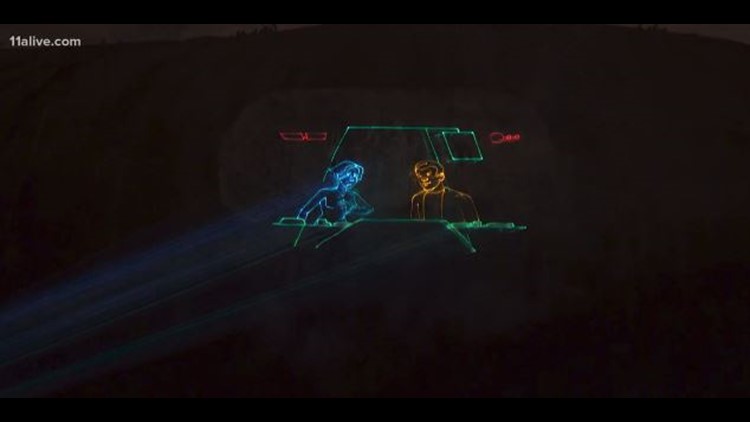If you're ever out at Stone Mountain when the sun is starting to go down, you'll notice that the mountain starts lighting up.
That's because of their popular laser light attraction. Today, we're looking at the science behind what makes it work.
The show, which began back in 1983, isn't just patterns on the mountain anymore.
"Our goal in the laser show is what started off as just saying, 'Hey, let's put images up on the mountain,' - some abstract images - has developed into what is a spectacular [show] for crowds to see," Paul Creasy said. "So what we want to do is make sure we're really delivering that experience - a show experience like you can't get anywhere else."
The show is definitely one-of-a-kind but perhaps the most unique thing you'll find is the largest projection screen in the United States - 400 feet by 400 feet. That's roughly the size of a 6,800-inch television screen.
But how does it all work?
"We customize the video imagery that goes on the mountain," Creasy said. "And we may do a technique called 3D mapping where you can sort of make a skin of the mountain and you can move and manipulate that skin so we can make blocks of rocks come off this and go over here and things like that."
That's a lot more difficult than it sounds, though. The image might appear flat to your eye but there's actually a 50-foot variation in the depth of the carving. So those lasers have to be very precise.
It takes three high-powered laser machines to produce an image and its effects that large. Those images are created as a collection of points that outline the image like a dot-to-dot drawing with over 1,000 dots per image.
"Imagine the laser as a pencil but we're drawing images on the mountain with a laser," Creasy said. "But we do it fast enough with the laser that we're continually outlining and tracing shapes, so, if you do that fast enough, your eye, there's a feature called persistence of vision which makes your eye and your mind think you're seeing a solid image."
The system traces the dots at 30,000 points per second. Now throw in an 80-foot water geyser, a 100-foot mega-flame cannon, fireworks, 20 GPS operated drones and 92,000 watts of sound and you've got something spectacular on your hands.



